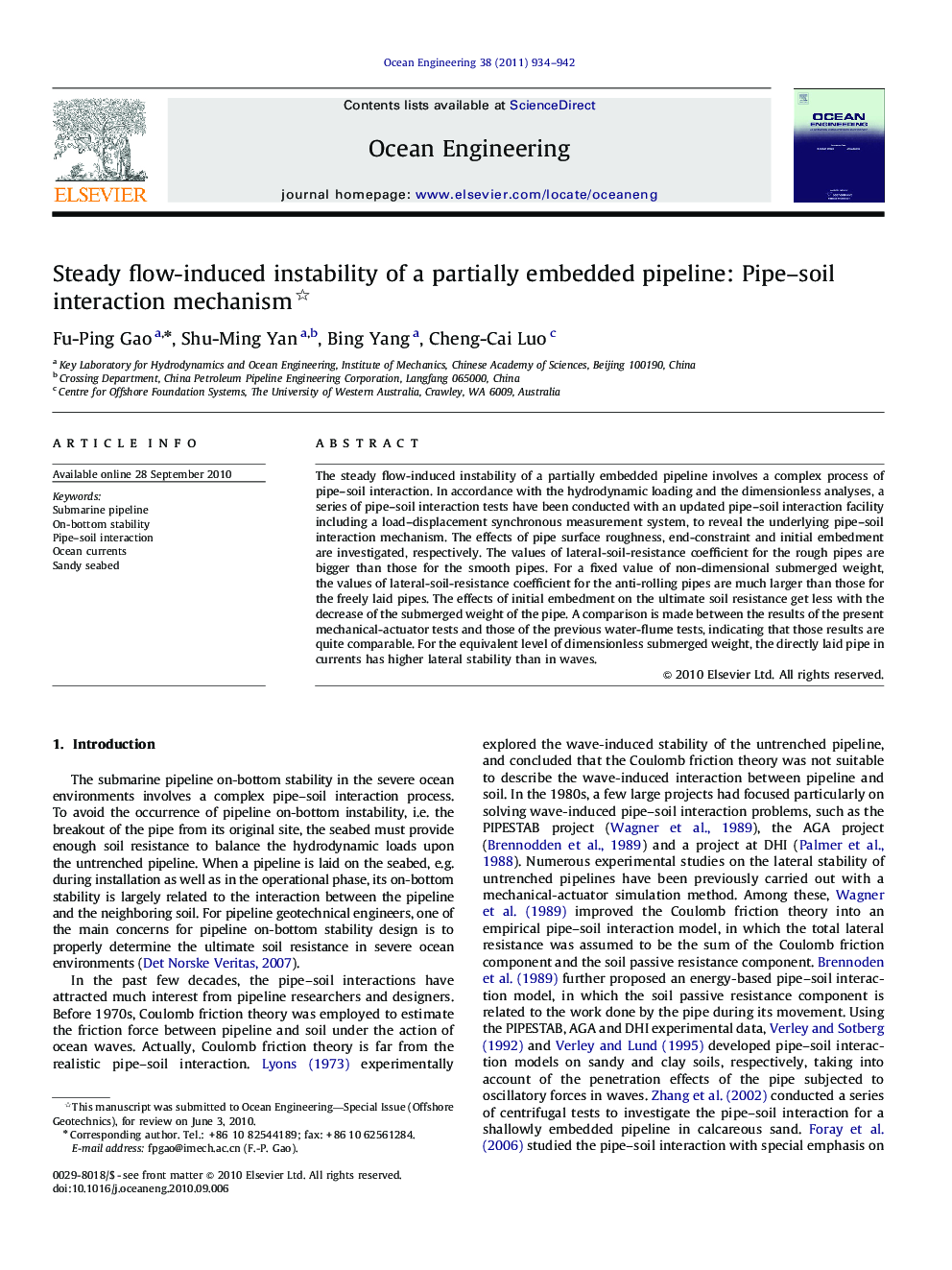| Article ID | Journal | Published Year | Pages | File Type |
|---|---|---|---|---|
| 1726433 | Ocean Engineering | 2011 | 9 Pages |
The steady flow-induced instability of a partially embedded pipeline involves a complex process of pipe–soil interaction. In accordance with the hydrodynamic loading and the dimensionless analyses, a series of pipe–soil interaction tests have been conducted with an updated pipe–soil interaction facility including a load–displacement synchronous measurement system, to reveal the underlying pipe–soil interaction mechanism. The effects of pipe surface roughness, end-constraint and initial embedment are investigated, respectively. The values of lateral-soil-resistance coefficient for the rough pipes are bigger than those for the smooth pipes. For a fixed value of non-dimensional submerged weight, the values of lateral-soil-resistance coefficient for the anti-rolling pipes are much larger than those for the freely laid pipes. The effects of initial embedment on the ultimate soil resistance get less with the decrease of the submerged weight of the pipe. A comparison is made between the results of the present mechanical-actuator tests and those of the previous water-flume tests, indicating that those results are quite comparable. For the equivalent level of dimensionless submerged weight, the directly laid pipe in currents has higher lateral stability than in waves.
